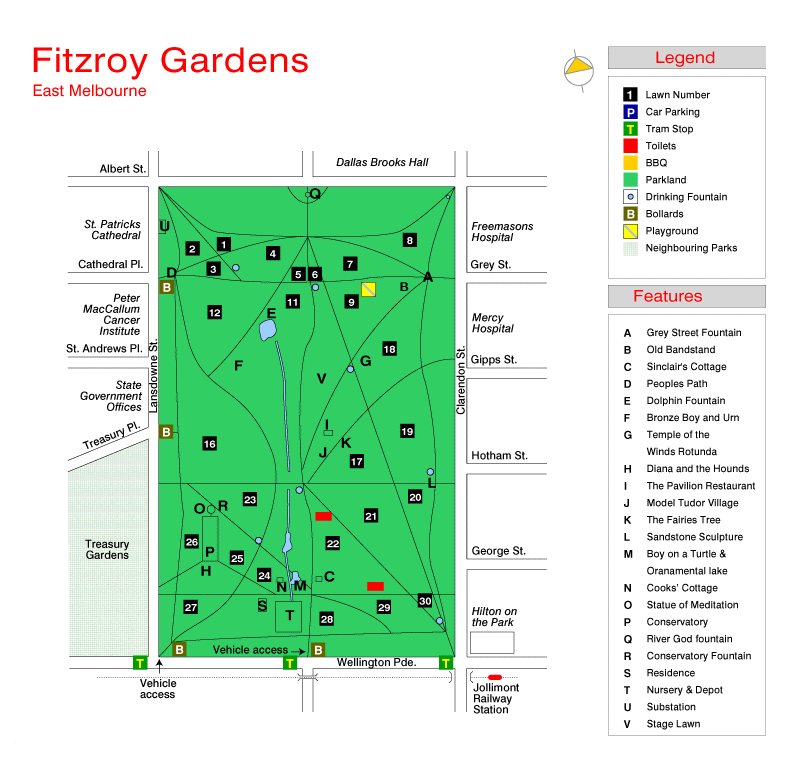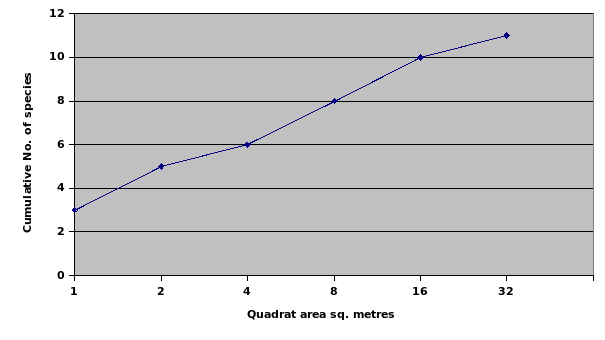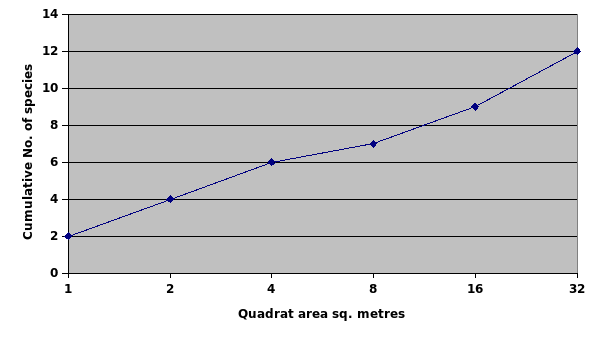Introduction
Different types of ecosystems constitute the biosphere that is why people can find themselves within various ecosystems which function according to many ecologic laws. That is why, it is important to examine properly the qualities of ecosystems. According to Hollar, “an ecosystem consists of a biological community and its physical environment” (Hollar 2011, p. 66).
To understand the particular features of the ecosystem’s development, it is necessary to note that “ecosystems are categorised into abiotic (able to live without oxygen) and biotic (oxygen-dependent) components” (Hollar 2011, p. 66).
Thus, the purpose of the investigation is to examine the biotic and abiotic components of the definite ecosystem found in the Fitzroy Gardens, Melbourne, and to pay attention to the interactions between the components. The other objectives are to examine the ecosystem’s properties and to discuss the specifics of the energy flow and chemical cycling.
Methods
The place under the study is the territory near Cook’s Cottage in the Fitzroy Gardens, Melbourne (the territory N 24 on the map). The Fitzroy Gardens are located in East Melbourne, Victoria, Australia. The park can be discussed as the south-eastern territory of the Melbourne Central Business District (CBD).
The territory near Cook’s Cottage was chosen because the cottage is situated in a vegetable garden where there are many different kinds of grasses and herbs to observe in a single territory. The territory is known for the ‘chamomile lawn’ where various types of the English herbs are presented.
The characteristic feature of the garden is the focus on the herbs typical for Great Britain and Northern Europe (Cook’s Cottage Garden n.d.; Fitzroy and Treasury Gardens n.d.). The ‘chamomile lawn’ was chosen for the observation as the example of a specific ecosystem.
The active observation was used as the method to examine the ecosystem. The Fitzroy Gardens was visited on 29 December, 2012. The time period of observation was 2 p.m. – 4 p.m.

Results and Discussion
Biotic Components of the Ecosystem
The main biotic components of the ‘chamomile lawn’ in the Fitzroy Gardens are grasses and herbs. The number of herbs in the ‘chamomile lawn’ is more than of grasses because of the lawn’s purpose to present different kinds of the English herbs. The species-area relationship is presented in Table 1.
The results in on the chosen area were compared with the results on the near-by area, and it is possible to speak about the similar shape for the two areas within the ecosystem as it is presented in Figure 1 and Figure 2. The areas are rich in such medicinal herbs as Pot Marigold and Sage and such herbs as Fennel and Hyssop.
It is possible to predict the species richness for a sample area of 20 m2 in the ecosystem and state the prevalence of Pot Marigold and Sage as the main plants and Grass sp. 3 and Herb sp. 1, 2.
Table 1. Species in Two Areas of the Ecosystem (the ‘Chamomile Lawn’)
Figure 1. The Relationship between the Cumulative Number of Species and the Quadrat size for Area 1.

Figure 2. The Relationship between the Cumulative Number of Species and the Quadrat size for Area 2.

Interactions between Biotic and Abiotic Components of the Ecosystem
During the time period of observation, many ants and three different beetles were observed at the chosen area. Ants were crawling among the grass. Two beetles were crawling among the grass, and one beetle was sitting at the grass with blade like leaves. The abiotic components presented at the territory are some big stones and many small stones.
There is no obvious shade because of the absence of large stones or trees at the territory. The soil can be discussed as fertile with some clay in it. Two grey feathers of birds were observed.
It is possible to speak about the effect of the abiotic environment on ants because the number of ants was observed near the big stone where the soil was rather wet. However, the observed living things have no significant impact on the abiotic environment of the chosen ecosystem.
Energy Flow in the Ecosystem
The energy flow is realised according to several trophic levels. The primary producers of the determined territory are plants (herbs and grasses) which receive the necessary sun energy as a result of photosynthesis (Callenbach 2008). The main three primary producers are Pot Marigold and Sage which have large green leaves.
The most common primary producer in the ecosystem is Pot Marigold because of its expansion within the territory. The consumers are animals and bacteria which feed on primary producers. The primary consumers in the definite ecosystem are the insects which can be eaten by the secondary consumers.
The observed primary consumers are ants, beetles, and hoppers. They can feed upon leaves of the grass and some herbs. The secondary consumers are different kinds of bugs which eat ants and a lizard which eat insects.
The tertiary consumer was not observed, but it can be a bird the feathers of which were found. There is less energy at the trophic level at which a bird can be observed and the limited number of the food. That is why the low density of the level is connected with the energy moved from levels to levels.
The food chain of the observed ecosystem is Pot Marigold and Sage ants, beetles, and hoppers two kinds of bugs and a lizard a bird.
Chemical Cycling in the Ecosystem
The dead organic material is presented in the form of dead leaves. It is impossible to compare the dead plant material with the herbs and grasses presented because of the changed shape and colour. The examples of the non-living animal material are not presented, but it is possible to conclude with references to the feathers found about dead birds at the territory.
There are some small broken branches at the territory which were sent here with the wind. Dead organisms were not found under the layers of the grass, but it is possible to discuss the process of recycling of carbon and oxygen within the ecosystem.
Conclusion
The purpose of the investigation was to observe the definite ecosystem in the Fitzroy Gardens, Melbourne. The observed territory was an example of the grassland with different kinds of grasses and herbs presented. Some insects and the feathers of birds were observed at the place, and this fact allows concluding about the energy flow within the ecosystem.
The interactions between the biotic and abiotic elements are obvious with references to changing the wetness of the soil because of the presence of some big stones and the impact on ants.
Reference List
Callenbach, E 2008, Ecology: a pocket guide, University of California Press, USA.
Cook’s Cottage Garden n.d. Web.
Fitzroy and Treasury Gardens n.d. Web.
Hollar, S 2011, Ecology, The Rosen Publishing Group, USA.